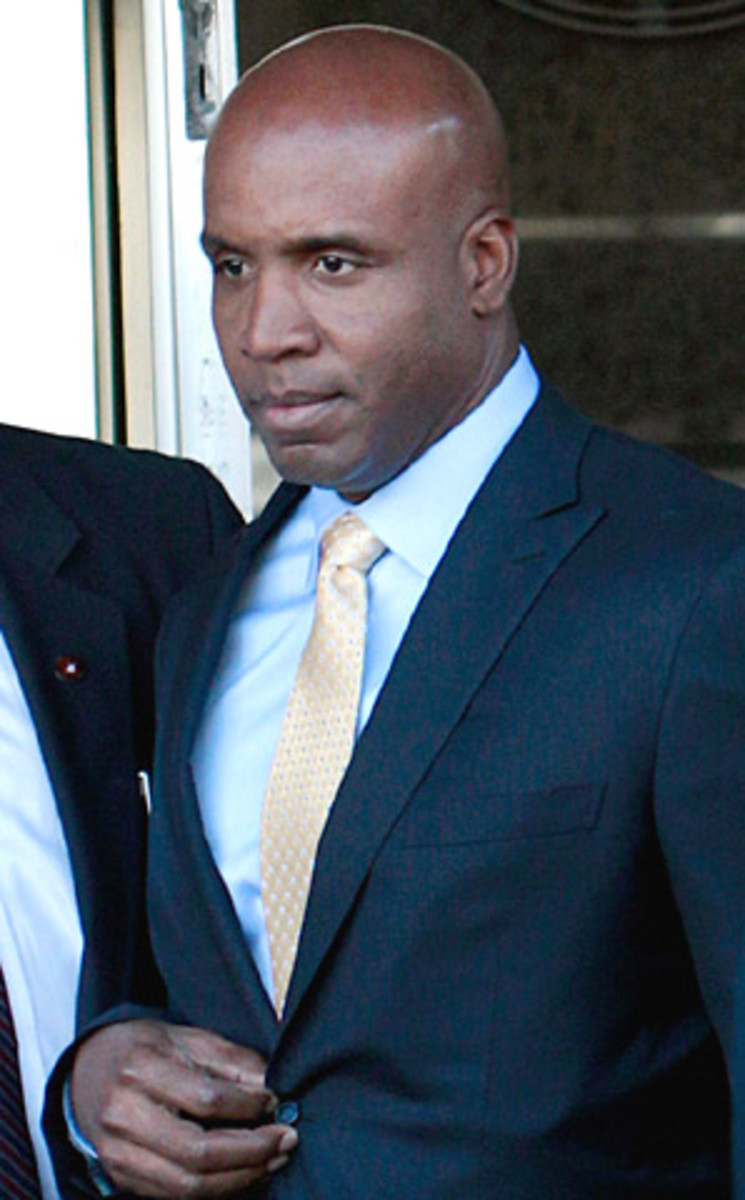Day 12: Lawyers make their final pitches in Bonds' perjury trial
SAN FRANCISCO -- Three quick thoughts after Day 12 of Barry Bonds' perjury trial:
1. Count 2 of the indictment is the one to remember
It was apparent during closing arguments on Thursday that the strongest evidence in favor of a conviction pertains to Count 2, which covers Bonds' statements to the grand jury that no one other than a doctor had ever injected him. During its final remarks, the government played a recording of a conversation made by Steve Hoskins, Bonds' former gofer, during which he and Greg Anderson, Bonds' trainer, apparently discussed how Anderson moved injections around on Bonds to avoid causing infections.
Prosecutor Matt Parrella also did his best to prop up Kathy Hoskins, Steve's sister, who testified that she witnessed Anderson inject Bonds once in the stomach. "She was a rock," Parrella said. "She was not happy being here, but she told what she saw."
To the defense claim that Kathy was part of a conspiracy along with her brother and Kimberly Bell, Bonds' former mistress, to get Bonds, Parrella said: "Kathy hadn't spoken to Kim Bell in 15 years. That must have been some planning for the conspiracy to last 15 years."
The defense seemed to creat enough reasonable doubt in regards to the other charges in the indictment, but it wasn't as successful impeaching Kathy Hoskins. So, Count 2 lingers as the government's best (and perhaps only) shot at a conviction.
2. The defense gave the jury three paths toward an acquittal
A cheat sheet for defense attorney Allen Ruby's closing arguments would have looked like this: A) Immaterial. B) Government conspiracy. C) Unreliable witnesses.
Those were the options Ruby and fellow defense attorney Chris Arguedas presented to the jury and why they said jurors should find Bonds not guilty on all counts. Options B and C were well covered during the government's presentation of evidence, particularly Option C. Witnesses such as Steve Hoskins and Bell were destroyed during cross-examinations to the point that Ruby and Arguedas didn't spend too much time Thursday ripping them further.
Instead, Ruby used a good chunk of time to take "a close look at the law." He claimed that what Bonds may have left out or lied about before the grand jury wasn't central to the grand jury's task of investigation BALCO. In other words, Bonds couldn't have obstructed the government (which is Count 5 of the indictment) if what he said was immaterial to their case. It may be a stretch, but it also plants a seed that the jurors will likely feel compelled to address.
3. The Stan Conte conversation with Bonds finally got the play it deserved
When Conte, the former Giants' trainer, took the stand earlier in the trial, he described a curious conversation with Bonds in the team's training room just after BALCO had been raided in 2003. According to Conte, Bonds said that he knew Anderson dealt steroids but that he only did so to support his family. Bonds also allegedly said he was aware that Anderson kept doping calendars for athletes. Lastly, Bonds suggested that Conte's son, a minor-leaguer, go to his doctor and claim erectile dysfunction so he could obtain a cream (presumably testosterone).
The government didn't probe that conversation enough when Conte was on the stand, but in his final remarks Parrella highlighted it. The defense had earlier built up Conte, cited him as one of the few government witnesses who didn't require an immunity deal, and Parrella used that to his advantage. He called Conte a person who had no reason to lie, and said it "very telling" that Bonds knew those things about Anderson before he ever went before the grand jury. He asked jurors to consider that fact strongly as it deliberated. It was a winning moment for the prosecution and a good point to close on.






